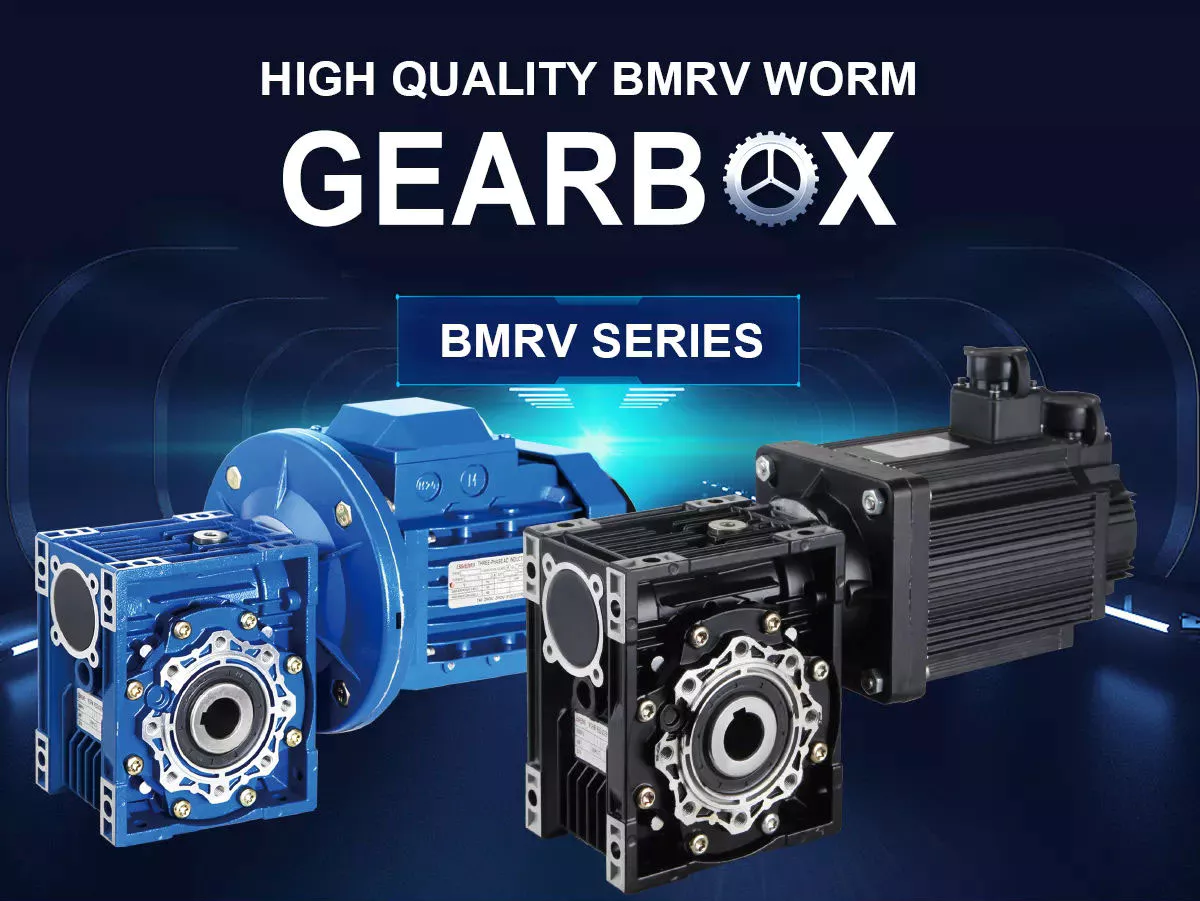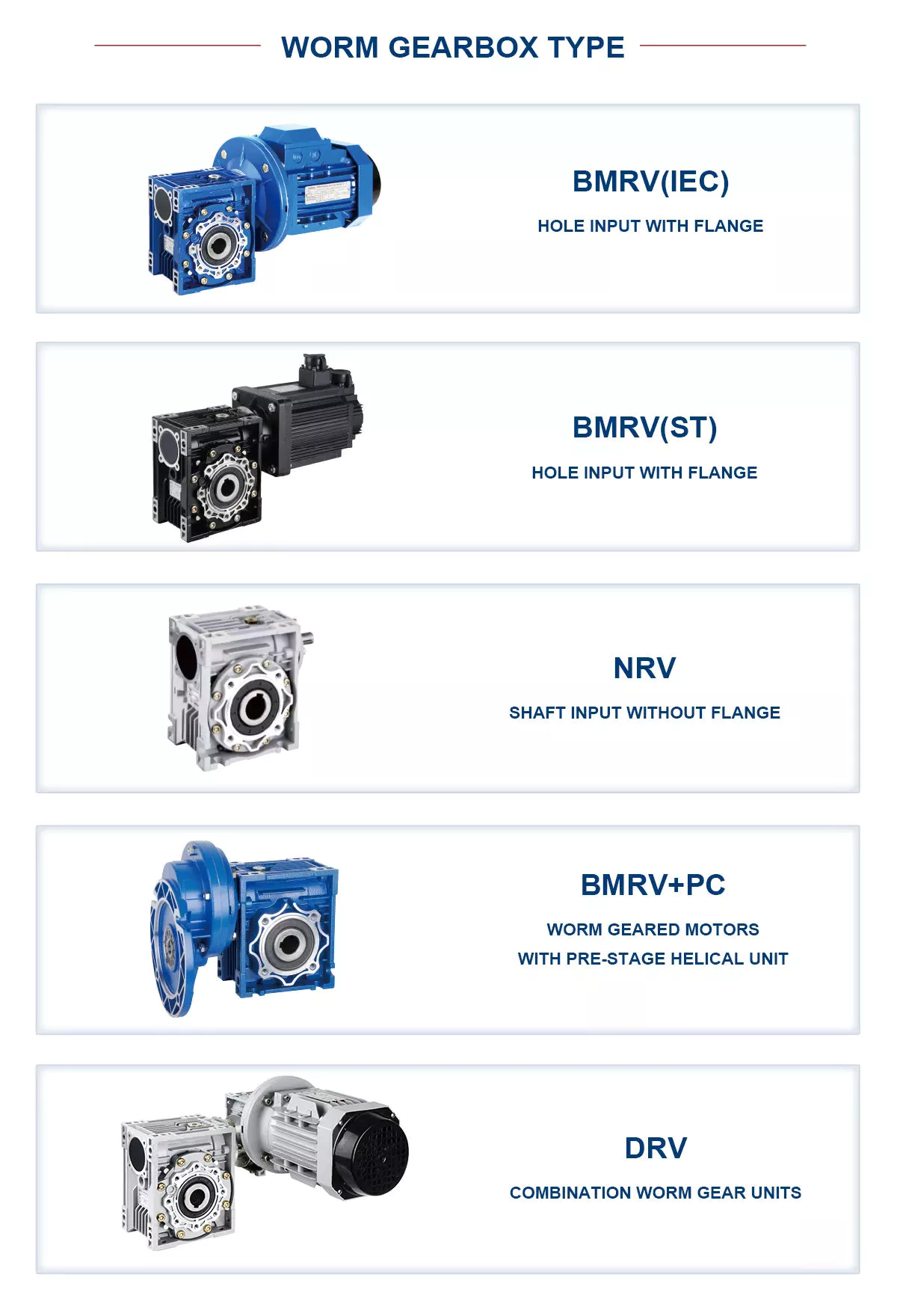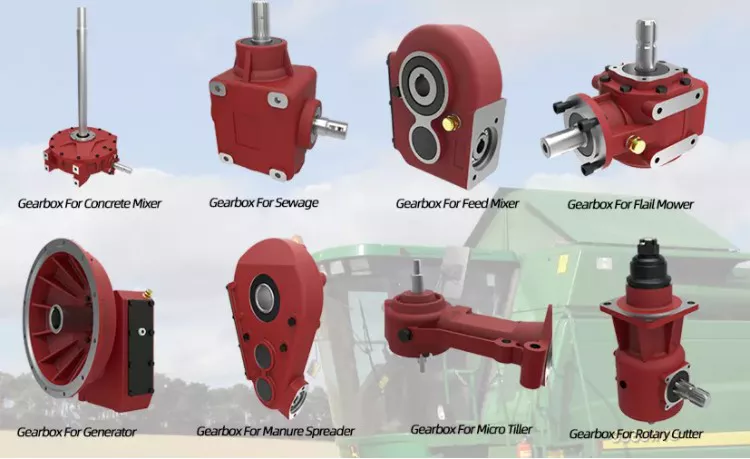Relevant Industries: Equipment Repair Retailers
Gearing Arrangement: Worm
Product title: Worm Equipment Speed Reducer
Ratio: 5-100
Materials: Aluminium Alloy
Mounting Position: Horizontal Foot Mounted Vertical
Enter Kind: Shaft Enter
Constructions: Worm Gear Units
Software: Robotics
Output Type: Shaft output
Kind: Worm Gearmotor
Packing: Carton
Packaging Particulars: Carton or as consumer prerequisite
Port: ZheJiang /HangZhou/HangZhou/ZheJiang or as client prerequisite
RV Collection Worm Equipment Pace Reducer
The RV reducer is composed of a entrance stage of a planet-gear speed reducer and a rear phase of a cycloidal pin gear velocity reducer. The RV reducer has the rewards of compact structure, large transmission ratio, and transmission system with a self-locking operate below specific situations. It is 1 of the most typically utilized reducers, and it has reduced vibration, minimal sound and lower strength use.
RV Reducer Features:
(1) A huge transmission ratio assortment
(2) The torsional stiffness is large, and the output system is the earth provider supported at the two finishes. The rigid disc with the left stop of the world provider is output. The huge disc is bolted with the operating mechanism, and its torsional stiffness is significantly larger than that of the common cycloidal pinwheel. The output system of the reducer. Beneath the rated torque, the elastic backlash is small
(3) As long as the design and style is realistic and the manufacturing assembly precision is assured, substantial precision and modest gap backlash can be attained
(4) Substantial transmission efficiency
(5) The volume when transmitting the very same torque and power is small (or the bearing capacity per device volume is huge), the RV reducer makes use of 3 planetary gears for the first phase, specially the second phase, the cycloidal pin wheel is difficult. The multi-tooth engagement of the tooth surface, which in change establishes that it can transmit large torque with a tiny volume, and in the structural design, the transmission mechanism is put in the supporting primary bearing of the earth carrier, so that the axial dimension is significantly decreased. All of the earlier mentioned variables significantly minimize the overall quantity of the transmission.
RV Sequence Worm Equipment Velocity Reducer Specification:
| Variety: | Worm Equipment Pace Reducer |
| Product: | a) NMRV571-a hundred thirty(F) b) NRV571-a hundred thirty(F) c) NMRV-NMRV571-one hundred thirty(F) d) NRV-NMRV571-130(F) |
| Ratio: | 1:5,7.5,10,fifteen,twenty,twenty five,30,40,50,60,80,100 |
| Colour: | Blue/Silver Or On Consumer Ask for |
| Materials: | Housing: Die-Solid Aluminum Alloy |
| Packing: | Carton and Wooden Circumstance |
| Bearing: | C&U Bearing |
| Seal: | NAK SKF |
| Input energy: | .06KW,.09KW,.12KW,.18KW,.22KW,.25KW,.37KW,.55KW,.75KW,1.1KW, one.5KW, 2.2KW,3KW,4KW,4.8KW ,5.5KW,7.5KW,9.2KW |
| Usages: | Industrial Device, Food Things, Ceramics, CHEMICAL, Packing, Dyeing, Woodworking, Glass. |
| Lubricant: | Synthetic/Mineral |
Worm Equipment Velocity Reducer summary:
One Action Worm Gear Reducer
1. Produced of Aluminum alloy die-casting box, great hunting in look, compact in framework rust proofing on Floor and tiny quantity to conserve mounting room.
two. Excellent radiating attribute leads protected and large efficiency for utilizing.
three. The sturdy ability of loading and overload make certain steady transmission, make significantly less vibration and sound.
4. May differ of connecting structure for electrical power enter and torque output satisfy various demands the design and style of box define and the set of foot gap is apt to with high a lot of varieties of mounting.
five. In addition to large situations, no hole structure of box signifies a servicing-free of charge that is hermetically sealed. It prevents the lubricant from very easily getting rid of and going poor, and exchanging.
Double Action Worm Equipment Reducer
1. It is blended by 2 single phase reducers and has all the virtues of them. And you can get greater ratio with it.
2. The versions of25/30,25/40,thirty/forty,30/fifty,30163,forty/75,40/ninety,50/one hundred ten,sixty three/130,63/one hundred fifty, are in common use.
3. You can choose25,30,forty,fifty,sixty three,seventy five,90,one hundred ten,one hundred thirty,150 as blend models to blend in accordance to the truth of your specific demands.
Worm Equipment Velocity Reducer Structure Look at:
Worm Equipment Pace Reducer Product & Marker:
Dimensions:
NMRV571 Speed Reducer:
NRV speed reducer
NRV-NMRV Pace Reducer:
NMRV-NMRV Velocity Reducer:
NMRV-NMRV Mounting Positions:
Manufacture Photo:
Principal Tools
Organization Data
FAQProcess Of An Order:
1.You should check out item comprehensive information above.
A. Product/Measurement B. Transmission Ratio C. Shaft Path D. Buy Amount.
2.Our Export Services Group will make contact with you with a quotation file 3 several hours following our staff get your enquiry.
three.When you make sure you an buy, our staff will validate with you about color, deal, technique of payment and supply,
then a sales contract will be sent to you to validate.
four.Packing: Carton and Wood Case.
Any concern, you should really don’t hesitate to speak to us. Thank you!
Worm gear reducer
A worm gear reducer is a gear reducer that uses a worm gear train to reduce the required force. Unlike traditional gear reducers, these units are small and require low horsepower ratings. This reduces their efficiency, but their low cost and compact design help make up for this shortcoming. However, these gear reducers have some drawbacks, including their tendency to lock up when reversing.
high efficiency
High-efficiency worm reducers are ideal for applications where high performance, repeatability, and accuracy are critical. It consists of an input hypoid gear and an output hypoid bevel gear. The input worm rotates perpendicular to the output worm, so for every revolution of the input worm, the output gear makes one revolution. This arrangement reduces friction (another source of energy loss) in a high-efficiency worm gear to at least two arc minutes.
Compared with worm gear reducers, hypoid gearmotors offer several advantages, including lower operating costs and higher efficiency. For example, hypoid gear motors can transmit more torque even at high reduction ratios. Also, they are more efficient than worm gear reducers, which means they can produce the same output with a smaller motor.
In recent years, the efficiency of worm gear reducers has been dramatically improved. Manufacturers have made great strides in materials, design, and manufacturing. New designs, including dual-enveloping worm gear reducers, increase efficiency by 3 to 8 percent. These improvements were made possible through countless hours of testing and development. Worm gear reducers also offer lower initial costs and higher overload capability than competing systems.
Worm gear reducers are popular because they provide maximum reduction in a small package. Their compact size makes them ideal for low to medium-horsepower applications and they are reticent. They also offer higher torque output and better shock load tolerance. Finally, they are an economical option to reduce the device’s power requirements.
low noise
Low-noise worm gear reducers are designed to reduce noise in industrial applications. This type of reducer uses fewer bearings and can work in various mounting positions. Typically, a worm reducer is a single-stage unit with only one shaft and one gear. Since there is only one gear, the noise level of the worm gear reducer will be lower than other types.
A worm gear reducer can be integrated into the electric power steering system to reduce noise. Worm reducers can be made and from many different materials. The following three-stage process will explain the components of a low-noise worm reducer.
Worm gear reducers can be mounted at a 90-degree angle to the input worm shaft and are available with various types of hollow or solid output shafts. These reducers are especially beneficial for applications where noise reduction is essential. They also have fewer parts and are smaller than other types of reducers, making them easier to install.
Worm gear reducers are available from various manufacturers. Due to their widespread availability, gear manufacturers maintain extensive inventories of these reducers. The worm gear ratio is standard, and the size of the worm gear reducer is universal. Also, worm gear reducers do not need to be sized for a specific purpose, unlike other load interruptions.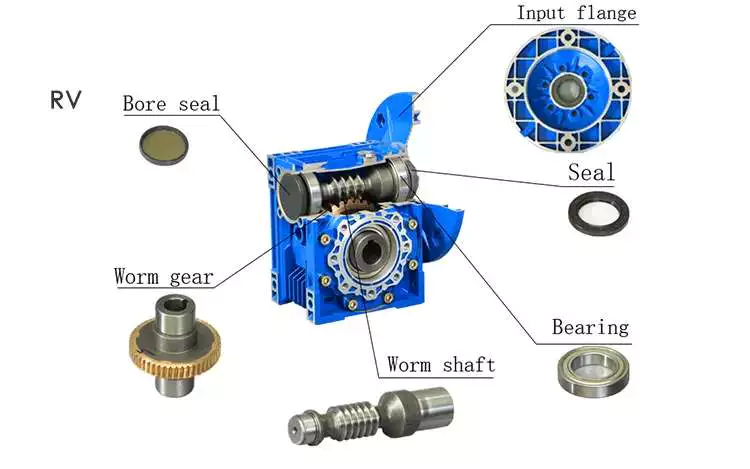
A worm gear reducer is a transmission mechanism with a compact structure, large transmission ratio, and self-locking function under certain conditions. The worm gear reducer series products are designed with American technology and have the characteristics of stable transmission, strong bearing capacity, low noise, and compact structure. In addition, these products can provide a wide range of power supplies. However, these worm reducers are prone to leaks, usually caused by design flaws.
Worm gear reducers are available in single-stage and double-stage. The first type consists of an oil tank that houses the worm gear and bearings. The second type uses a worm gear with a sleeve for the first worm gear.
When choosing a gear reducer, it is essential to choose a high-quality unit. Improper gear selection can cause rapid wear of the worm gear. While worm gear reducers are generally durable, their degree of wear depends on the selection and operating conditions. For example, overuse, improper assembly, or working in extreme conditions can lead to rapid wear.
Worm reducers reduce speed and torque. Worm gears can be used to reduce the speed of rotating machines or inertial systems. Worm gears are a type of bevel gear, and their meshing surfaces have great sliding force. Because of this, worm gears can carry more weight than spur gears. They are also harder to manufacture. However, the high-quality design of the worm gear makes it an excellent choice for applications requiring high torque and high-speed rotation.
Worm gears can be manufactured using three types of gears. For large reduction ratios, the input and output gears are irreversible. However, the worm reducer can be constructed with multiple helices. The multi-start worm drive also minimizes braking effects.
Self-locking function
The worm reducer is self-locking to prevent the load from being driven back to the ground. The self-locking function is achieved by a worm that meshes with the rack and pinion. When the load reaches the highest position, the reverse signal is disabled. The non-locking subsystem back-drives the load to its original position, while the self-locking subsystem remains in its uppermost position.
The self-locking function of the worm reducer is a valuable mechanical feature. It helps prevent backing and saves the cost of the braking system. Additionally, self-locking worm gears can be used to lift and hold loads.
The self-locking worm gear reducer prevents the drive shaft from driving backward. It works with the axial force of the worm gear. A worm reducer with a self-locking function is a very efficient machine tool.
Worm gear reducers can be made with two or four teeth. Single-ended worms have a single-tooth design, while double-ended worms have two threads on the cylindrical gear. A multi-boot worm can have up to four boots. Worm reducers can use a variety of gear ratios, but the main advantage is their compact design. It has a larger load capacity than a cross-shaft helical gear mechanism.
The self-locking function of the worm reducer can also be used for gear sets that are not necessarily parallel to the shaft. It also prevents backward travel and allows forward travel. The self-locking function is achieved by a ratchet cam arranged around the gear member. It also enables selective coupling and decoupling between gear members.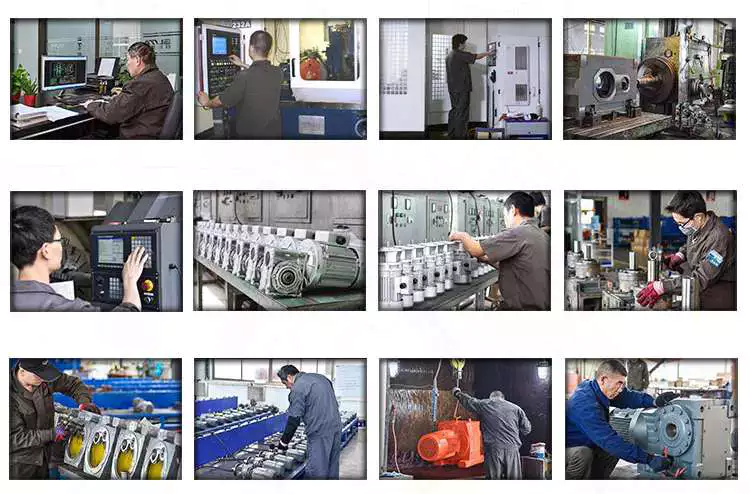
high gear ratio
Worm reducers are an easy and inexpensive way to increase gear ratios. These units consist of two worm gears – an input worm gear and an output worm gear. The input worm rotates perpendicular to the output worm gear, which also rotates perpendicular to itself. For example, a 5:1 worm gearbox requires 5 revolutions per worm gear, while a 60:1 worm gearbox requires 60 revolutions. However, this arrangement is prone to inefficiency since the worm gear experiences only sliding friction, not rolling friction.
High-reduction applications require many input revolutions to rotate the output gear. Conversely, low input speed applications suffer from the same friction issues, albeit with a different amount of friction. Worms that spin at low speeds require more energy to maintain their movement. Worm reducers can be used in many types of systems, but only some are suitable for high-speed applications.
Worm gears are challenging to produce, but the envelope design is the best choice for applications requiring high precision, high efficiency, and minimal backlash. Envelope design involves modifying gear teeth and worm threads to improve surface contact. However, this type of worm gear is more expensive to manufacture.
Worm gear motors have lower initial meshing ratios than hypoid gear motors, which allows the use of smaller motors. So a 1 hp worm motor can achieve the same output as a 1/2 hp motor. A study by Nissei compared two different types of geared motors, comparing their power, torque, and gear ratio. The results show that the 1/2 HP hypoid gear motor is more efficient than the worm gear motor despite the same output.
Another advantage of the worm gear reducer is the low initial cost and high efficiency. It offers high ratios and high torque in a small package, making it ideal for low to medium-horsepower applications. Worm gear reducers are also more shock-resistant.

editor by czh

